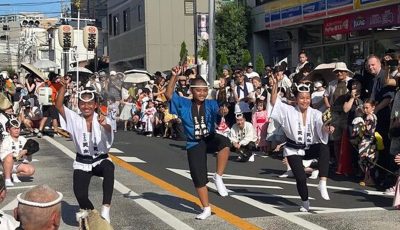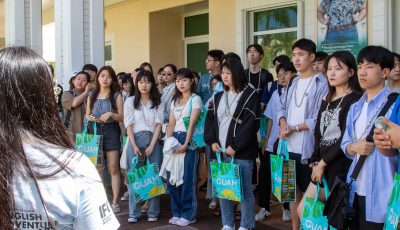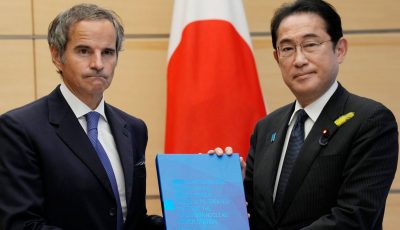NAP again
We are into our second month of formal penury so we’ll visit NAP tomorrow to pick-up $82 worth of food stamps. I do not know how the office arrived at the figure for a single mouth but it does put green leafy vegetables into my table. I discovered that the green leaf and stalk at the bottom of a cauliflower that I had been throwing away as trash is actually edible. Things one learn when hanging over the bottomless abyss!
There is advantage being over 70 among those that line up at NAP. I waited for a number in the line inside the door when someone noticed my gray hair and asked for my age. She told me to proceed straight to the counter as man’amko gets immediate attention. How convenient. I saw why. Most of my age, even younger ones, walked with four-pronged cane, or were pushed on wheel chair. I carried my weight unaided, making me an oddity in the crowd.
The CNMI 2010 census had 43K U.S. citizens and 15K CWs. NAP served almost a million that year. After Typhoon Soudelor, with the weakened state of unemployment, and the longer life expectancy of elders, pick-up days gathered a crowd. True to government tradition, the cost of dispensing food assistance was more than the amount dispensed. Public programs tend to be also employment options, more so in the CNMI where the local government serves as a labor niche for the followers of elected politicians.
NAP is SNAP in Guam and 31 other states. The “S” stands for the supplemental nature of the program, ironically, began as Food Stamps when farm surplus exceeded needs shortly before the U.S. entered World War II. It lasted for four years and stopped when the war effort absorbed labor, making the nation income fed. At the onset, a big gulf separated the two.
JFK’s first executive order was for food distribution and on Lyndon Johnson’s watch the Food Stamp Act was passed in Congress. LBJ hailed the Act as dealing with agricultural abundance. Few Republicans supported what it derided as dole.
In ’74, the Federal Food Stamp Program (FSP) was implemented nationwide, hitched automatically to the Supplemental Security Income (SSI) by public law. At its inception, the FSP required a recipients’ purchase as a counter part to the benefit. That provision was nulled in the reform of ’77 and in the Welfare Reforms of the ’90s, it started using Electronic Benefits Transfer (EBT), a specialized debit card system that totally became national in 2008 when the Food Stamp program was renamed SNAP, the Supplemental Nutrition Assistance Program. Got that?
Guam runs its SNAP like the rest of the country’s programs; the CNMI opted to run its own version, 30 percent of cost comes from local appropriations. CNMI offers higher benefits than Guam but still uses the paper “currency.”
Like most “welfare” programs, the Donkeys (Democrats) initiated SNAP, opposed by Elephants (Republicans). It is therefore no surprise that the Food Stamp impetus was primarily made during Democrat’s terms: FDR, Jimmy Carter, Bill Clinton, and now, Barack Obama. As a Democrat-leaning denizen, I see the thrust of public assistance as what governments do temporarily to alleviate the needs of citizens in dire need of basic assistance.
It differs from charity work that often inculcates ideology, elements of belief, or even good behavior, or the subtle insinuation of the same. In NAP, the assessment of need is objective with the question of whether one needs it or not, a “Yes or No” proposition, no questions asked.
Because the folks in Sinosphere are high on social face, China’s mienzi, Japan’s mentsu, and Korea’s Chemyeon, they are inhibited from joining the program save maybe one or two Hanguk, but then, South Korea is the informal 51st State of the Union, so familiarity with the practice is no big surprise.
BTW, Korea as a State of the Union is no idle characterization. The top 3 U.S. ground troop deployment without count of dependents are: Japan (48,828), Germany (37,704), and South Korea (27,558). Japan managed to avoid Uncle Sam’s gung ho; Americans in Japan outdo the natives in indigene ways. In Germany, well, a lot of America sprechen sie Deutch. What can I say? But South Korea of 2016, the reverse is true. Some Koreans now speak impeccable English with liberal use of the “f” word in street discourse.
In Seoul ’72, I ate Big Mac with kimchi on the side, compliments of the Double Arches. Korea’s unification cannot occur unless the Grunts leave, and that is not going to happen anytime soon.
Pea Eye used to have U.S. military facilities, asked to leave 25 years ago. Now grunts are asked to return, never mind that they really never left; against Abu Sayyaf, hit-and-run operations were incognito around General Santos and Cagayan de Oro.
Democratic ‘Pinas is immuned from the preoccupation with mukha (face), except the taas ilong (uppity Flips), the satisfaction to meet need precedes worry about reputation. NAP’s crowd abounds in Pea Eye dialects. And I bring my laptop along. Klass, neh?



























